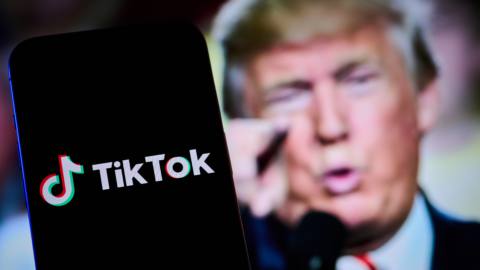What are you doing, Apple.
In a livestream event on Monday unveiling the new iPhone 16, as well as updated models of the Apple Watch and Airpods, Apple debuted a new iPhone and a pricier Pro model, as usual, both featuring USB-C ports just like last year. Also, ridiculously, just like last year, the standard iPhone model has a compromised port that can only move data at the same speed devices were capable of in the year 2000.
Last year Apple finally replaced the Lightning connector it's been using in the iPhone since 2012 with USB-C, the universal connector that most other mobile devices (and laptops) have harmoniously rallied around over the last half-decade. Even though Apple's been slowly working towards fully adopting USB-C for awhile, first putting the ports in MacBooks and iPad Pros, it's been a very slow process to see that port actually make it to the company's most-used mobile devices. And the USB-C port that Apple put on the iPhone 15 was a half-step: it ran at 23-year-old USB 2.0 speeds, because only the iPhone 15 Pro got a new system-on-a-chip containing an on-board USB controller that could handle 10 gigabit USB 3.1 Gen 2 speeds. That's 20 times faster, incidentally.
I assumed that this year, the iPhone 16 would catch up to last year's Pro model, since Apple traditionally trickles down the features from the Pros to the base phone a year later. But no. When the iPhone 16 tech specs page finally appeared on Apple's store, I sat there for a second in disbelief. There it is again: USB 2.0.

The iPhone 16 is using a new system-on-a-chip this year, rather than the model in last year's Pro, and Apple clearly decided not to prioritize putting a proper 21st century USB controller on there. Maybe there just wasn't room, since this year it's hyping up its new “Apple Intelligence” AI features. I humbly suggest that it might have been intelligent to equip the new, $800 phone with a USB spec more capable than the one used on the iPod circa 2003.
It's a particularly frustrating omission considering that almost all of Apple's other devices have made their way onto the high-speed USB train by now. During Monday's event Apple announced a small refresh of the Airpords Max headphones, which have now ditched the Lightning cable. The Airpods Max are otherwise unchanged and cost the same $550 they cost in 2020. Meanwhile, all of Apple's recent refreshes of its iPad models—the Air, the Mini, and the regular iPad—have been getting their own USB-C ports, and now only the base model iPad is USB 2.0 speed (480 Mbps) because it's using an older chipset. The iPad Mini is USB 3.0 (5 Gbps); the iPad Air is USB 3.1 Gen 2 (10Gbps). The iPad Pro is leading the pack with USB 4 (40Gbps!).
Considering the plain jane iPad was last updated in October 2022, I have a feeling it'll be joining the Air with a modern chipset and a no-longer-embarrassing USB-C port very soon. The iPhone, I guess, will have to wait yet another year.
It essentially took EU regulations dragging the iPhone into USB-C adoption for it to finally happen last year (while I'm sure Apple was planning the change, those regulations definitely gave it a push). I'm sure the iPhone 16's USB 2.0 spec is purely a cost-cutting or space-saving exercise within the tight confines of the phone body, but I still can't but help feel like it's a little bit petty to support the standard without doing it right.
Even if we aren't moving loads of data to our phones via USB cable these days, on principle I can't abide it. The cheapest Android phone you pluck off the shelf will almost certainly do USB 3 speeds, yet the richest company in the history of the world making the most popular smartphone can't even hit the baseline for speed we've been using for well over a decade?
I don't need Apple's new “AI emoji” feature to express how I feel about that: 👎






